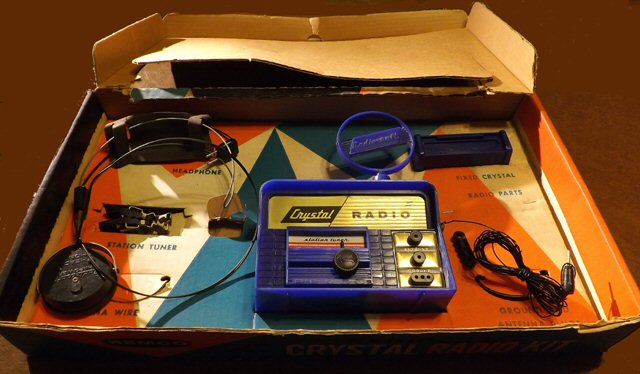always a technician – thanks to Mom & Uncle Clint
| Before childhood amateur radio projects, before college freshman radio work, before sound engineering in San Francisco, at the Vulcan Gas Company, and the Armadillo World Headquarters, my mother taught me to repair lamp wiring when I was very young. I began building electronics projects with a crystal radio kit when I was 6 years old. |  |

 About that time, my Uncle Clint Phare started inspiring me. Unfortunately, that only lasted a few years due to our differences in ages, and locations, but Clint still had a profound effect. About that time, my Uncle Clint Phare started inspiring me. Unfortunately, that only lasted a few years due to our differences in ages, and locations, but Clint still had a profound effect.
I wish I knew more about Clint. What I do know is based on Mom’s stories of her favorite brother-in-law, what his descendants have told me, and what I’ve discovered from a wealth of Internet sources.
Before the Phare Signo-Marker became the de facto industry standard, projectionists would use ad hoc cue markings on film to know when to change reels. The Signo-Marker enabled discrete and precise cue marking for changeovers. If you have seen a film-based movie in a theater, you have seen the Phare cue markings when it was time to change reels, probably without noticing.
On page 10 of the December 7, 1957 “Modern Theater Section” of BoxOffice, Wesley Trout’s column says “Use only a Signo-Marker, which makes a round circle around the black dot, distributed by leading theatre supply houses everywhere, manufactured by Clint Phare Products.” Again, on page 16 of September 9, 1968, BoxOffice, Trout writes “Do not use a marking pencil for changeover cues. It is not necessary and it is easier to use a Signo-Marker.” Uncle Clint manufactured the product in the basement of his Euclid (Cleveland) home. After Clint and Aunt Bernice retired to Tucson in 1955, one of their daughters and her family moved into that home and continued to produce the product. One of his granddaughters eventually took over and continued to produce the product from that same basement until the 1990s. I acquired the 16mm and 35mm versions pictured above on eBay. The sellers were especially gracious when they learned that Clint was my uncle, and indicated that the products are still in use. When Clint lived in Euclid, we lived outside Washington, D.C. and would typically travel to Euclid twice a year. I spent many hours with Clint in that basement, as he passed skills on to his nephew. I remember pieces of equipment he would give me to work on when I got home. As far as I can tell, Clint never patented the Signo-Marker. However, he received three U.S. patents in the 1930s: 1,808,373 “Shock Absorbing Means for Turnstiles,” 1,869,022 “Register,” and 1,965,858 “Means for Preventing Clogging of Coin Controlled Devices.” My cousins and I wish we knew more about the application context of those inventions. Also, Clint’s father, John Jay Phare, received 1,516,683 “Fruit Tapping and Coring Utensil” in 1924, but we don’t know the context. The last time I remember seeing Clint was visiting in Tucson in December 1956. Not long after that, I built my first substantial electronic project, a Heathkit AR-3 shortwave receiver. I was dismayed that it didn’t work after I had finished, but Mom took it to our TV repairman, who found only one problem, a cold solder joint. After he fixed that, the AR-3 served me well. Years later, as a college freshman, I became the chief engineer of the campus radio station. That would not have happened if not for Mom and Clint. And, I wouldn’t be working on my home music studio. |

|
- Clint and I shared the same birthday. He was born 8/14/1887 and passed 11/29/1962.






